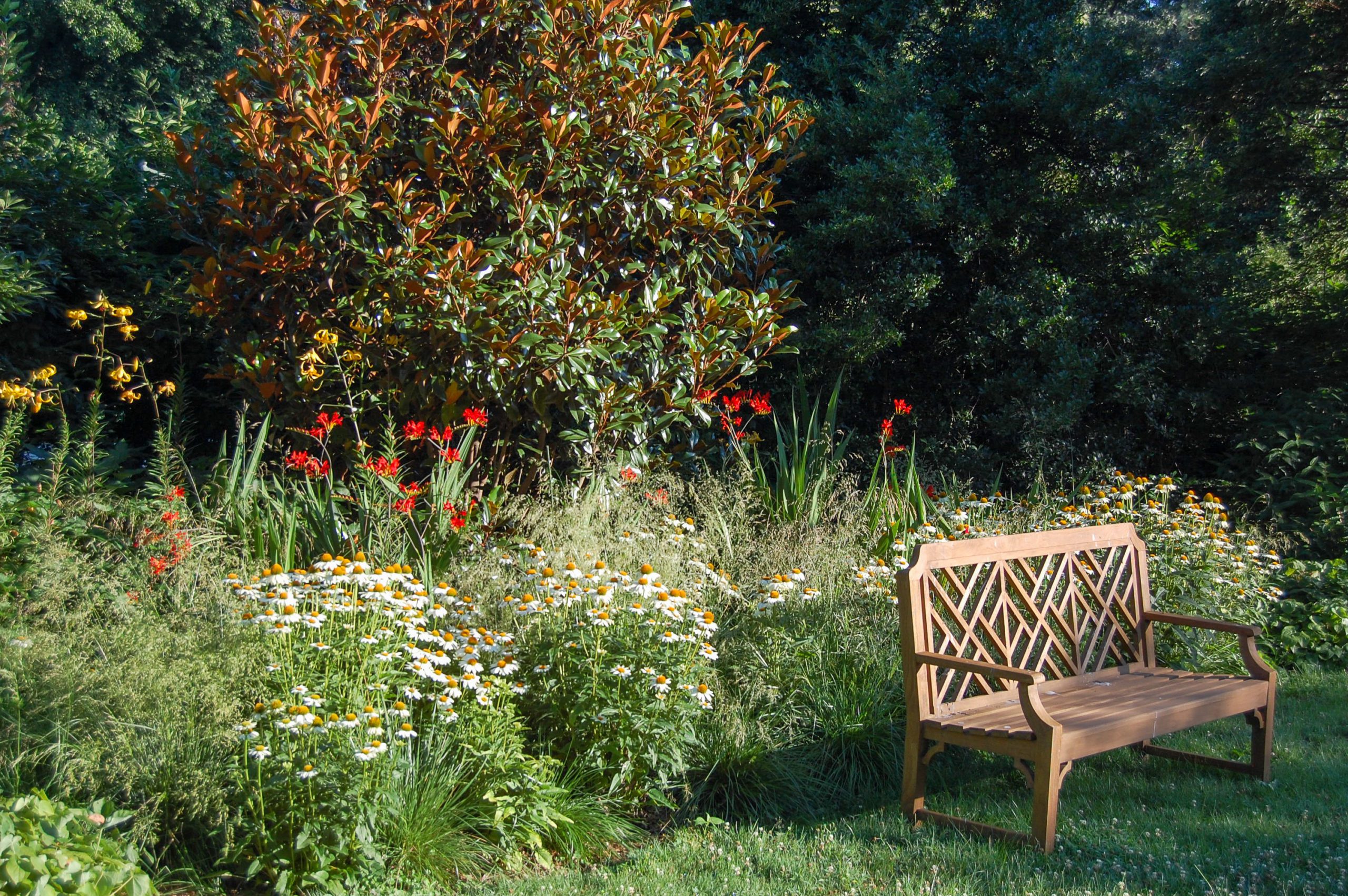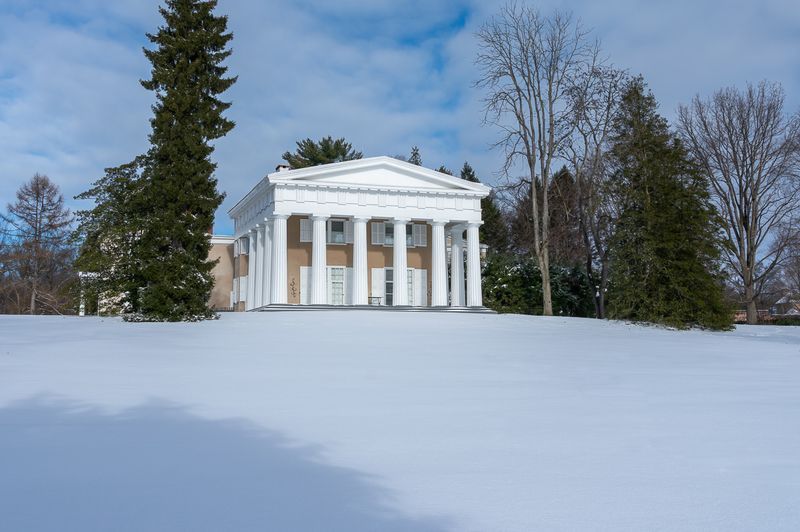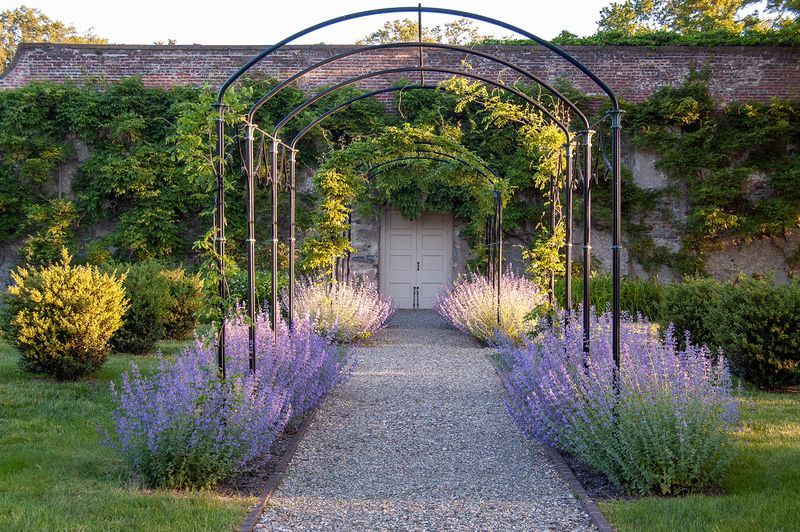December 4, 2018
Christmas Memories from Andalusia
In 1981, James Biddle wrote an article for a magazine about Christmas at Andalusia when he was a boy. Never published, this piece captures his creative writing talent and gives a glimpse into life in the Big House during the holiday season.
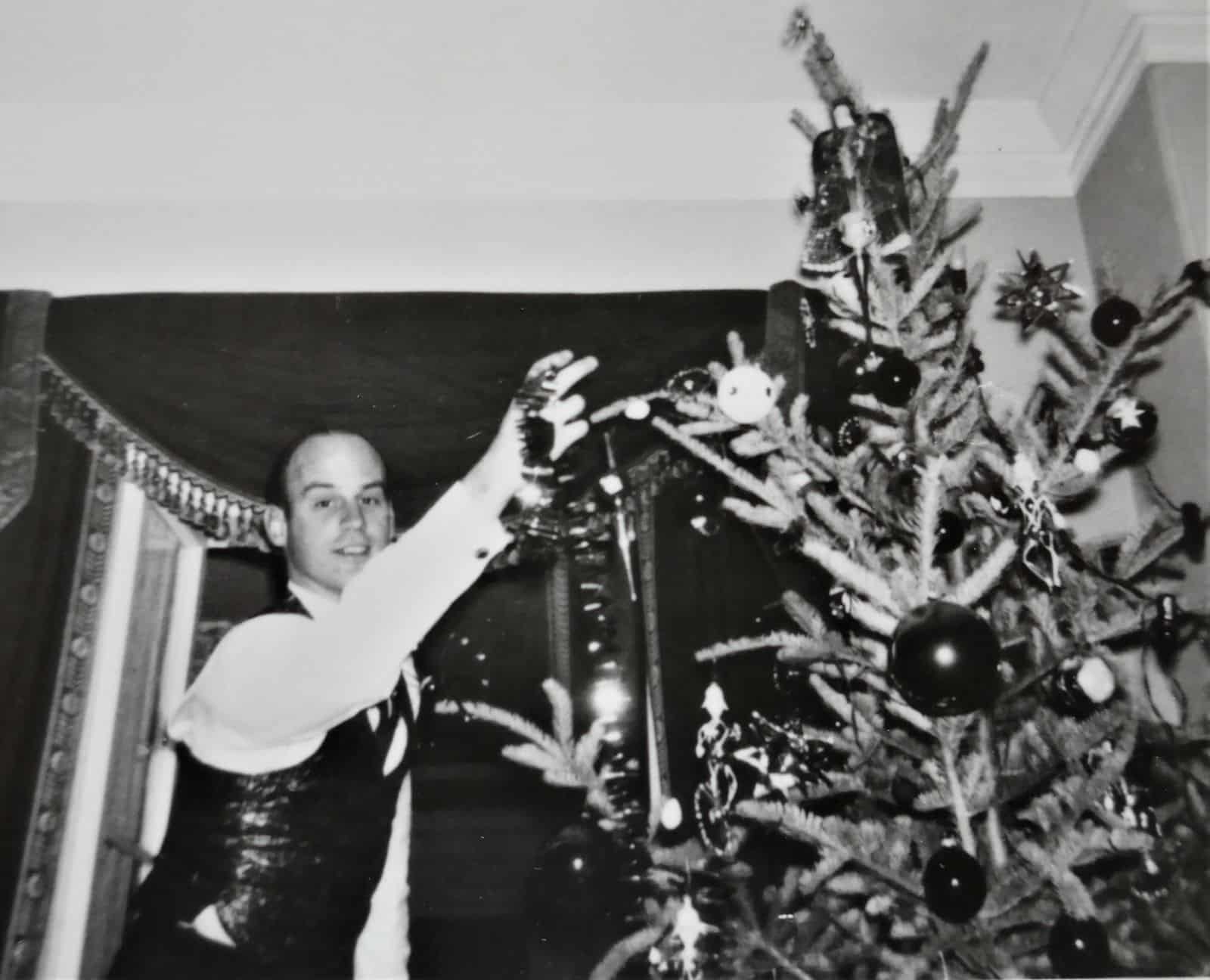
James “Jimmy” Biddle (1929-2005).
I often wonder if all those festive, made from nature, decorations and tables heaped with every imaginable dessert really appeared in our ancestors’ houses. Written records document this, but so does House Beautiful indicate today that every house should have snow-tinted trees with doves rampant in a cloud of Scotch plaid braid. Do we all do that? Well, not at Andalusia.
Indeed, we didn’t celebrate Christmas at all in the 19th century for the simple reason we weren’t there. Andalusia was a summer house, albeit complete with furnaces. The house was shuttered, a skeleton staff on duty to cut ice from the river for summer use (a ration of whiskey was added to their wages); the family, servants, and much of the furniture had gone to town for the winter season.*
Indeed we continued to go to town until the early 1930’s. The Depression and better rail and road systems brought that era to an end.

Jimmy’s parents Katharine L. Biddle and Charles J. Biddle
My mother was a devotee of everything Christmas. It may have been her French ancestry and New Orleans upbringing. Christmas to me and my children is still the sound of the bells stitched to her petticoat as she ordered the household on Christmas Eve.
The Christmas thrill was in the preparation. I don’t recall the religious aspect having much emphasis, except Christmas day when we attended 10:30 services, in the family pew, the family-donated windows, organ and altar furnishings about us. The agony was that our presents were still unopened beneath the tree in the Red Parlor. The service over; my grandmother seemed to take hours to speak to the minister, greet the parishioners, and finally move slowly, in her inevitable best black satin, 3/4 length, ropes of pearls, black hat, and melange of dark furs, to the waiting Buick with the equally elderly David, her chauffeur, standing by the door. We scrambled in after, our parents having departed to prepare for the moment of moments, the opening of presents.
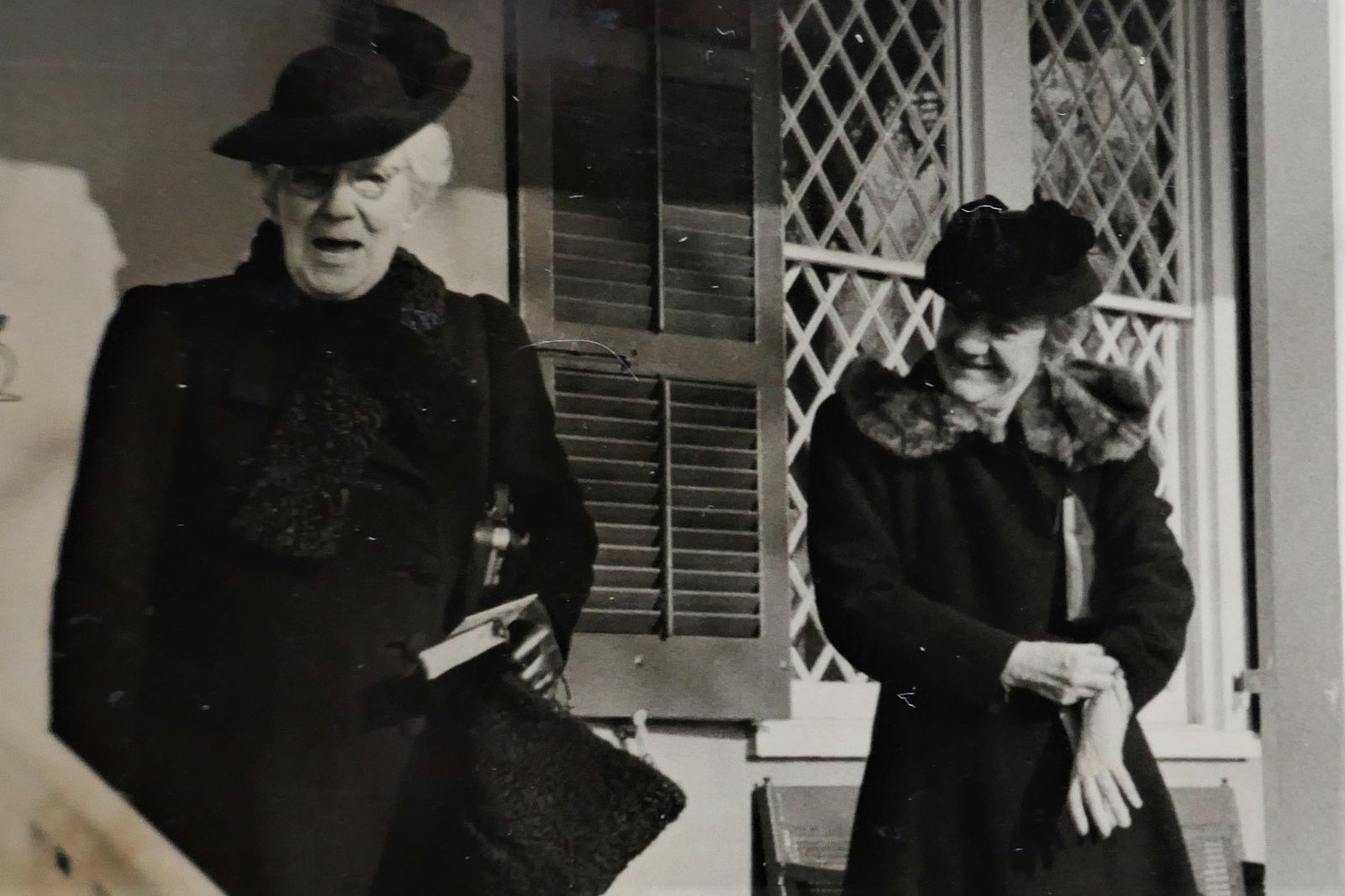
Jimmy’s grandmother Letitia Glenn Biddle (left) and friend.
This was not always a surprise. My mother, a highly organized lady of great beauty and charm, would solicit requests for gifts as soon as the FAO Schwartz catalogue arrived. How I watched the mail for that catalogue every fall. My brothers, being considerably older, had other dreams.
A list was submitted and duly considered. I soon learned that what was considered went onto a yellow foolscap list that was kept in the third drawer to the right in her library desk. She caught onto my spying and moved the list to her third floor office where the presents were wrapped. Undaunted, I found it again. However, she won the last round. The things I really, really wanted she didn’t list and I had to endure until after church. That is until I learnt that by leaning out my bedroom window Christmas Eve I could see into the Red Parlor for a sneak preview. The ecstasy I felt when my brother wheeled the-new bike past the drawing room window!
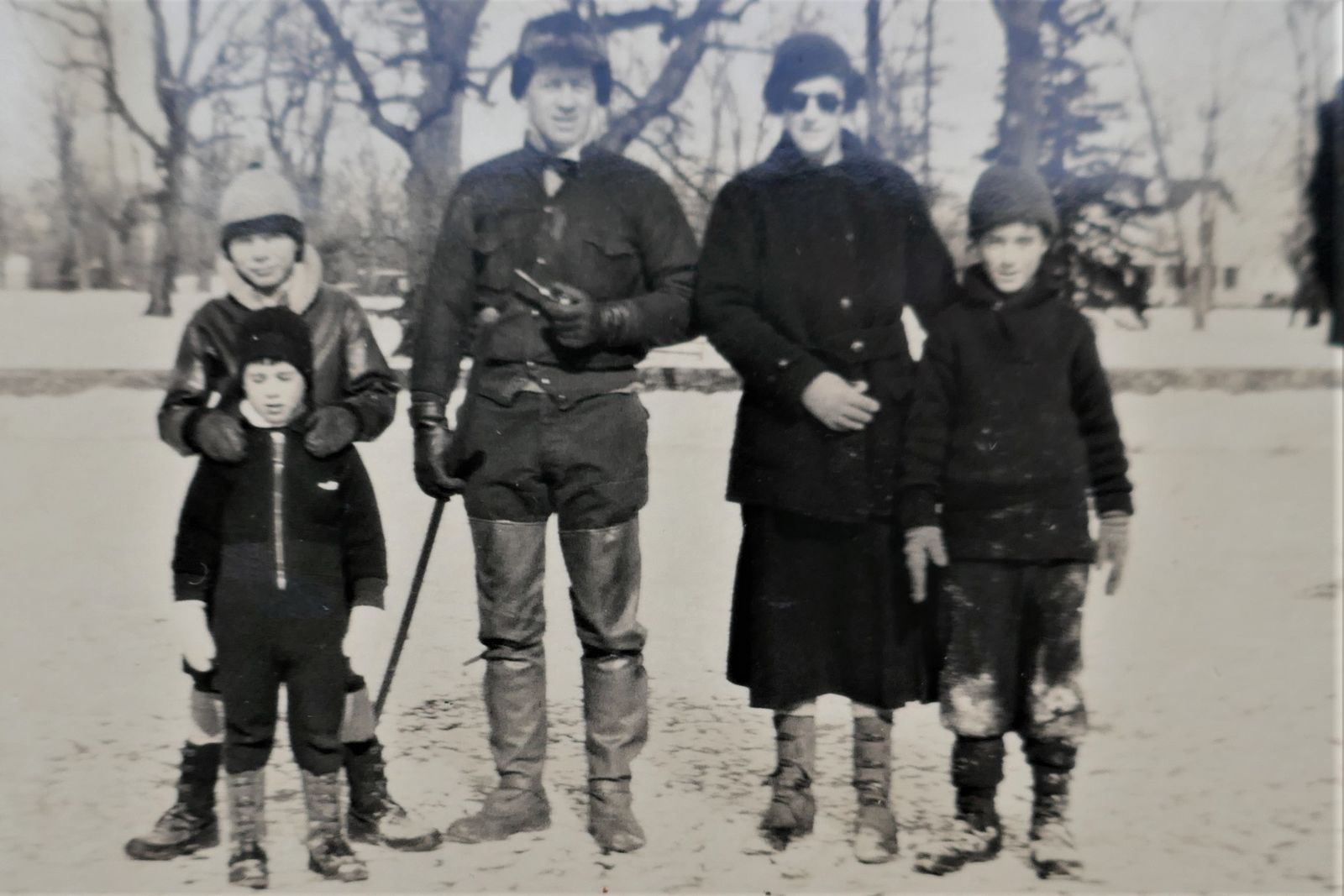
C.R. Mudie behind Jimmy Biddle, C.J. Biddle, Katharine L. Biddle, Charles Biddle standing on the frozen Delaware.
But the best fun was preparing for Christmas. Out of boxes came decorations carefully marked for the rooms they were to adorn. I had my own supply (my children have used them as well) to bring the Christmas feel to the Boys’ Wing where I resided with my Swiss-German nurse, Emma, who was in full spirit at this season. Window wreathes were everywhere and there were a lot of windows to be hung.
Next, outside lights went up on the huge Oriental spruce on the front lawn. It took two men an entire day. Finally, the house tree arrived, 15 or 16 feet of it, and more lights appeared from the cellar, marked and in perfect order, not a bulb out, and staff took over again. Only when all was ready did the tree ornaments come down from the attic and we were turned loose. The exact time of decorating was fluid and adjustable to how many of us were home from school and college. In the earlier days, it was Christmas Eve, after which I was dispatched to bed so the presents could be brought in. Later in life my mother insisted on having eggnog following a large supper with earlier cocktails. My father finally wearied of making this, and one year emptied all his half-used liquer bottles into the brew. We lost too many ornaments that time and barely got Granny to the Cottage to boot. Eggnog was banished from our Christmas.
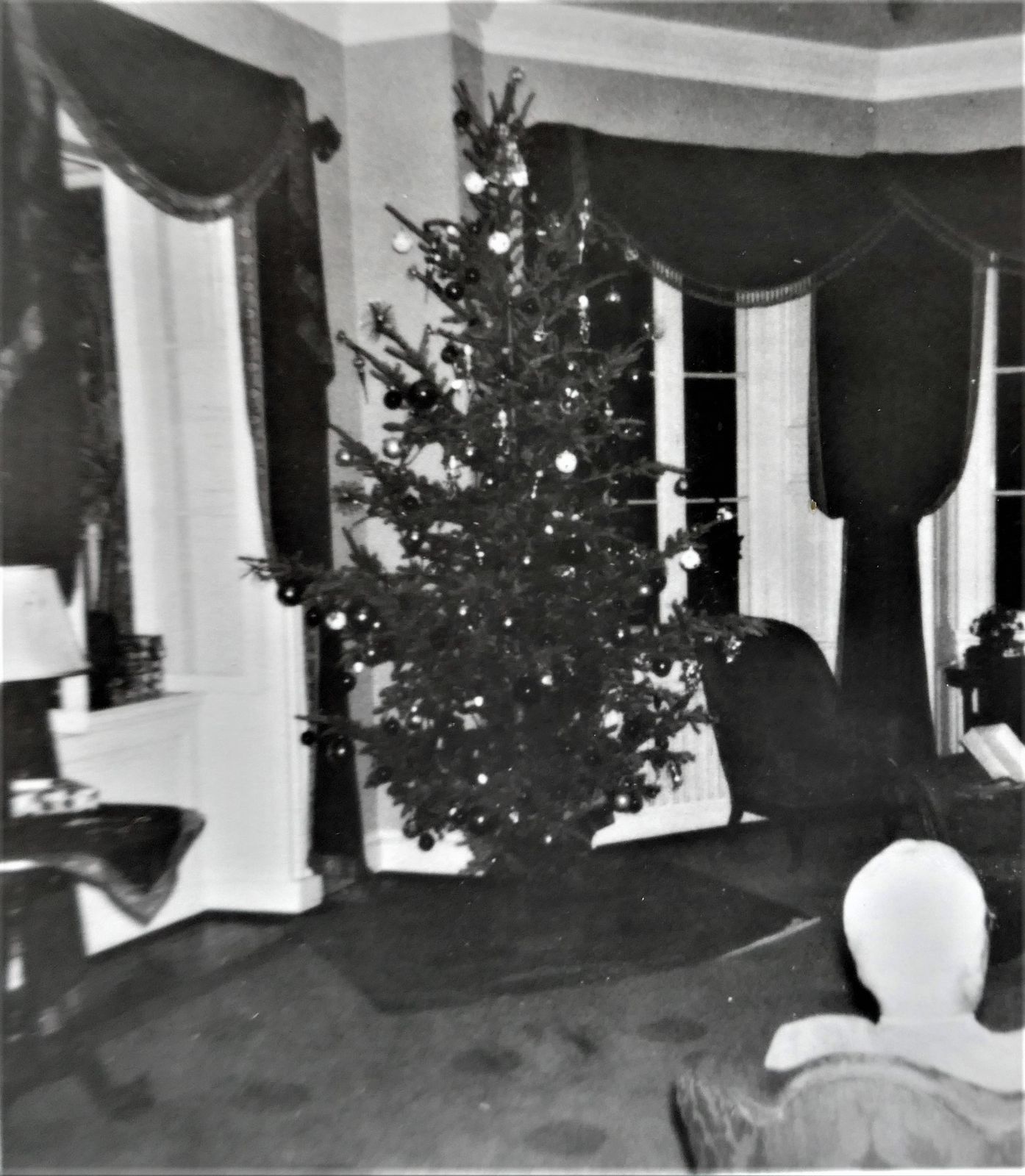
Red Parlor Christmas tree, c. 1963.
My mother was a born entertainer and Christmas brought her hospitality instincts to the fore. Every variety of cousin was asked, as well as lonesome friends. There were presents for all, including “the people on the place.”
Following the traditional lunch, we would adjourn to the Front Parlor and the head maid would say, “Everyone is here.” In would file gardeners, farmers, chauffeurs and household staff, complete with their rather numerous offspring. The latter were all my daily playmates, as Andalusia was still remote and my schoolmates had to weekend when they came. Of course, we scarcely recognized each other, dressed as we were for such a state occasion. It was my role, which I hated, to pass out the gifts to one and all and to receive halting thanks from someone who might have belted me just a day before.
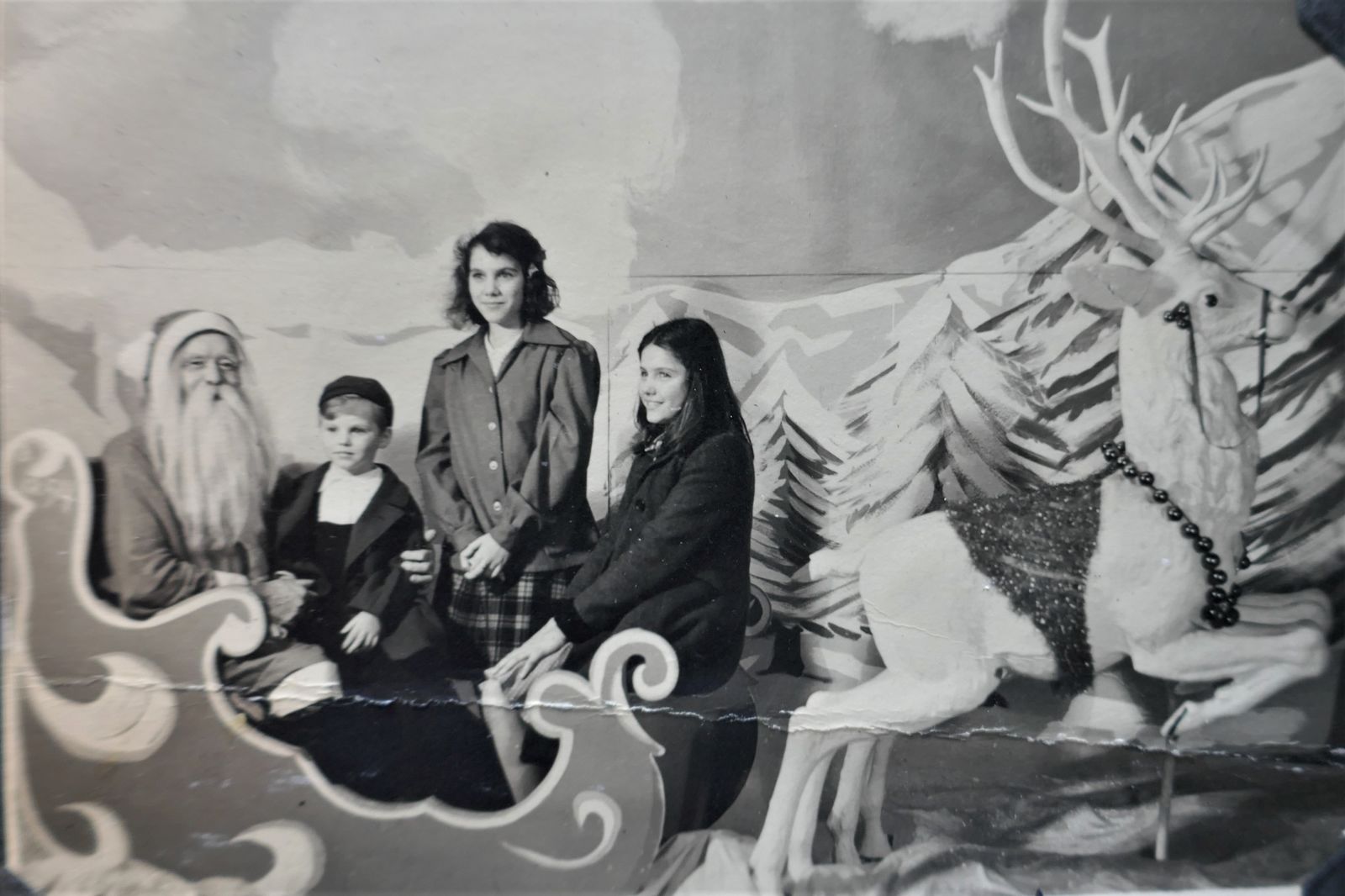
Biddle cousins from New Orleans, the Legendres.
Then there was the growing darkness outside. The presents were gathered by their new owners. During their unwrapping, Emma had saved all the wrapping paper and ribbons for possible use another season. The household was free to go to their families elsewhere. A cold supper was left on the sideboard. The occupants of the Big House drifted to their own pursuits. The elders went to martinis, my brothers and I to our rooms. Christmas was over, but there was still Andalusia, as beautiful and bright as ever. All that was missing was the next Schwartz catalogue. And so it has continued to this day.
**Recent research indicates that the season may have been longer than originally thought. In 1821, the family was still in residence in early December as Nicholas Biddle’s Account Book shows that on 5 December he recorded costs for a “visit to town.” Perhaps it was a mild winter since the following March, Biddle paid $5 for “bringing furniture from town.”

